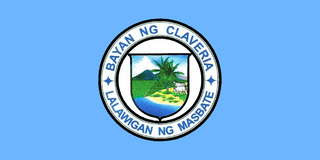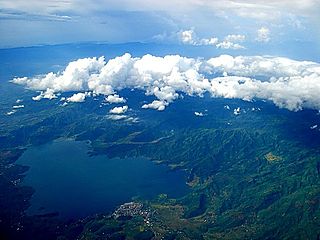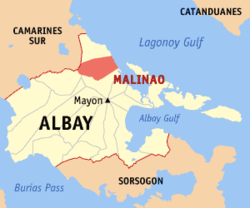
Guinobatan, officially the Municipality of Guinobatan, is a 1st class municipality in the province of Albay, Philippines. According to the 2020 census, it has a population of 85,786 people.

Claveria, officially the Municipality of Claveria, is a 3rd class municipality in the province of Masbate, Philippines. According to the 2020 census, it has a population of 42,142 people. Ranked 592nd among 1,488 municipalities in the Philippines.

Oas, officially the Municipality of Oas, is a 1st class municipality in the province of Albay, Philippines. According to the 2020 census, it has a population of 66,084 people.

Madalag, officially the Municipality of Madalag, is a 4th class municipality in the province of Aklan, Philippines. It is Aklan's largest municipality by land area and also the most sparsely populated. According to the 2020 census, it has a population of 18,890 people.

Bacacay, officially the Municipality of Bacacay, is a 2nd class municipality in the province of Albay, Philippines. According to the 2020 census, it has a population of 72,485 people. Bacacay is primarily an agricultural town and abundant in seafood.

Camalig, officially the Municipality of Camalig, is a 1st class municipality in the province of Albay, Philippines. According to the 2020 census, it had a population of 72,042 people. It is known for one of Bicol's finest delicacy, Pinangat.

Daraga, officially the Municipality of Daraga, is a 1st class municipality in the province of Albay, Philippines. According to the 2020 census, it has a population of 133,893.

Libon, officially the Municipality of Libon, is a 1st class municipality in the province of Albay, Philippines. According to the 2020 census, it has a population of 75,073 people.

Malilipot, officially the Municipality of Malilipot, is a 4th class municipality in the province of Albay, Philippines. According to the 2020 census, it has a population of 40,857 people.

Manito, officially the Municipality of Manito, is a 4th class municipality in the province of Albay, Philippines. According to the 2020 census, it has a population of 26,162.

Pio Duran, officially the Municipality of Pio Duran, is a 3rd class municipality in the province of Albay, Philippines. According to the 2020 census, it has a population of 49,070 people.

Santo Domingo, officially the Municipality of Santo Domingo,, is a 4th class municipality in the province of Albay, Philippines. According to the 2020 census, it has a population of 37,765 people.

Tiwi, officially the Municipality of Tiwi is a 1st class municipality in the Province of Albay, Philippines. According to the 2020 census, it has a population of 56,444 people.

Santa Elena, officially the Municipality of Santa Elena, is a 3rd class municipality in the province of Camarines Norte, Philippines. According to the 2020 census, it has a population of 43,582 people.

Caramoran, officially the Municipality of Caramoran, is a 3rd class municipality in the province of Catanduanes, Philippines. According to the 2020 census, it has a population of 32,114 people.

Donsol, officially the Municipality of Donsol, is a 3rd class municipality in the province of Sorsogon, Philippines. According to the 2020 census, it has a population of 50,281 people.

Buhi, officially the Municipality of Buhi, is a 1st class world class municipality in the province of Camarines Sur, Philippines. According to the 2020 census, it has a population of 81,306 people.

Lagonoy, officially the Municipality of Lagonoy, is a 2nd class municipality in the province of Camarines Sur, Philippines. According to the 2020 census, it has a population of 56,714 people.

Minalabac, officially the Municipality of Minalabac, is a 2nd class municipality in the province of Camarines Sur, Philippines. According to the 2020 census, it has a population of 53,981 people.

Tinambac, officially the Municipality of Tinambac, is a 1st class municipality in the province of Camarines Sur, Philippines. According to the 2020 census, it has a population of 70,176 people.
























